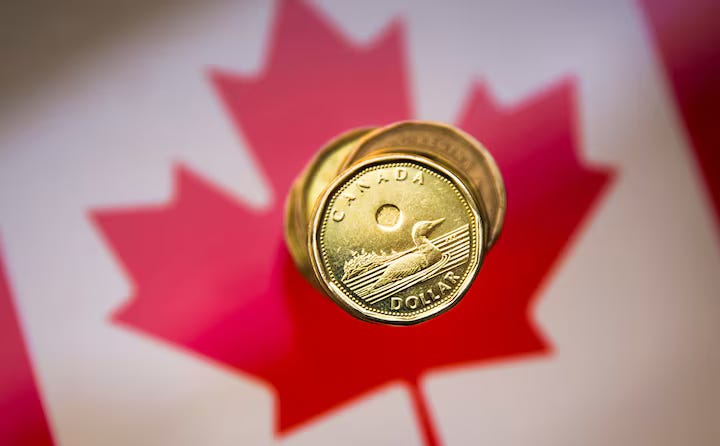I published the following article on Substack last Monday:
What Factors Affect the Foreign Exchange Rate? Part 2: Applications of the Basic Model of Foreign Exchange Rate Determination
Last week, I went through the process of developing a model which identifies forces that determine key macroeconomic variables — for example, net exports, net capital outflows, national saving, domestic investment and real exchange rates — and show how they relate to one another.
In it, I used a simple economic model of the foreign exchange market to show why running budget surpluses correspond to a fall in the value of the Canadian dollar (a depreciation), such as in the late-90s/early-2000s when our dollar ended up being much lower than it has been over the last 10 years (it fell to nearly U.S.$0.60).
I also showed why the value of the Canadian dollar rises in value (appreciates) when the U.S. lowers its interest rates. That helps explain why the Canadian dollar appreciated when U.S. interest rates were nearly zero at the beginning of the COVID-19 pandemic, and then depreciated again as U.S. interest rates rose in 2022.
So then I wondered something which I did not cover on Monday: what about the late-2000s/early-2010s when the Canadian dollar was often worth more than the U.S. dollar?
Well, we can combine the above two lessons to demonstrate why this is true: although the Harper government was running budget surpluses up to and including 2007, the subsequent 2008-09 financial crisis made running deficits sound economic policy.
That is not to say everything about the deficits was good, but running deficits during bad times is (in general) good Keynesian economic policy.
Furthermore, the crash was absolutely killing the U.S. economy, leading to their interest rates being lowered to almost zero — that is why they turned to Quantitative Easing, which is a story for another day.
So as I wrote above, falling U.S. interest rates lead to a higher Canadian dollar. When combined with the Harper government’s budget deficits, the Canadian dollar was at an historical high.
By 2014 when the Harper government went back to a budget surplus, the dollar was worth less than the U.S. dollar again.
We can similarly look at the years before the Canada/U.S. free trade deal was signed in the late-1980s — and before NAFTA was signed in the early-1990s — when the Canadian dollar was often very strong (sometimes worth more than the U.S. dollar): the Canadian economy was much less open to international trade, and starting in the 1970s, we ran large budget deficits every year.
So unfortunately, it seems if we want to go back to the days of the early-2010s when the Canadian dollar was so strong, we need to either run huge budget deficits and/or hope the U.S. economy collapses — or, as I also show in my article from last Monday, implement international trade barriers!
I am being a bit facetious here, but it goes to show a strong Canadian dollar is not always such a great thing, depending on how one looks at it. Sure, our dollar was worth more than the U.S. dollar during those years, but do we want to go back to a time when the Canadian economy was in a recession and running budget deficits, while the U.S. economy was in shambles? Or even when the U.S. economy was doing well and we ran budget surpluses, but our economy was much less open than it is now?
Sometimes, a low Canadian dollar can be a sign of a strong economy in both the U.S. and Canada.



